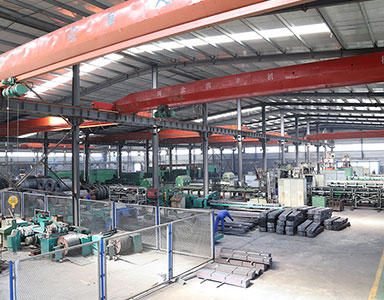Understanding Perforated Sheet Prices per Kilogram
Perforated sheets are vital materials in various industries, from construction to manufacturing, due to their versatility and functionality. These sheets, which are characterized by their pattern of holes, are manufactured from a variety of metals, including stainless steel, aluminum, and mild steel. The prices of perforated sheets can vary significantly based on several factors, and understanding these can aid businesses and individuals in making informed purchasing decisions.
Factors Influencing Perforated Sheet Prices
1. Material Composition One of the most significant factors that impact the price per kilogram of perforated sheets is the material used. Stainless steel is generally more expensive than aluminum or mild steel due to its corrosion resistance and durability. As such, when calculating the price of perforated sheets, the cost of raw materials will heavily influence the final price per kilogram.
2. Sheet Thickness The thickness of the perforated sheet also plays a crucial role. Thicker sheets require more raw material and may involve more complex manufacturing processes, thereby increasing the cost per kilogram. Conversely, thinner sheets are typically less expensive, making them a more cost-effective option for projects requiring less structural integrity.
3. Hole Pattern and Size The design of the holes, including their size, shape, and arrangement, can affect the price as well. Custom perforation patterns often require specialized machinery and additional labor, which can add to the overall cost. Standard patterns are usually more affordable, allowing businesses to save on production costs.
4. Quantity Ordered Purchasing perforated sheets in bulk can lead to significant savings, as manufacturers often provide discounts on larger orders. The economy of scale comes into play, where the cost per kilogram decreases with higher quantities. Therefore, businesses looking to utilize perforated sheets on a larger scale should consider ordering in bulk to optimize their expenses.
perforated sheet price per kg

5. Market Fluctuations The global market for raw materials (such as metals) is subject to fluctuations based on supply and demand dynamics. Changes in market prices for steel or aluminum can directly affect the cost of perforated sheets. Buyers need to stay informed about market trends, as prices can vary significantly over time.
6. Geographical Location The location of the supplier and the distance to the delivery site can impact pricing as well. Suppliers situated near manufacturing plants may offer lower transportation costs, leading to overall savings for the buyer. Importing materials from overseas could lead to additional shipping fees, thus raising the cost per kilogram.
Applications of Perforated Sheets
Perforated sheets have a wide array of applications across various industries. In the construction sector, they are commonly used for ventilation systems, decorative facades, and ceiling panels. The automotive industry employs perforated sheets in body panels and grilles, while the food processing sector utilizes them in sorting and sifting processes. Given their diverse applications, the demand for perforated sheets remains consistent, which influences pricing strategies among manufacturers.
Conclusion
When assessing the price of perforated sheets per kilogram, it is essential to consider a multitude of factors, including material composition, thickness, hole patterns, order quantity, market fluctuations, and geographical location. Understanding these elements can not only aid in budgeting and procurement but also enhance decision-making when selecting perforated sheets for specific applications.
For individuals or businesses interested in purchasing perforated sheets, it is advisable to compare prices from multiple suppliers and consider the specifications required for the project. Engaging with manufacturers directly may also lead to better pricing options and customization opportunities, ensuring that you receive the best value for your investment. In summary, the prices of perforated sheets are a reflection of the materials, manufacturing processes, and market forces at play, making them an important consideration in various industry sectors.
-
Why Galvanized Trench Cover Steel Grating Resists Corrosion
NewsJul.10,2025
-
The Versatility and Strength of Stainless Expanded Metal Mesh
NewsJul.10,2025
-
Load Calculations in Steel Grating Platforms
NewsJul.10,2025
-
Keeping Pets and Kids Safe with Chicken Wire Deck Railing
NewsJul.10,2025
-
Hole Diameter and Pitch for Round Perforated Metal Sheets
NewsJul.10,2025
-
Aluminium Diamond Mesh in Modern Architecture
NewsJul.10,2025
Subscribe now!
Stay up to date with the latest on Fry Steeland industry news.

